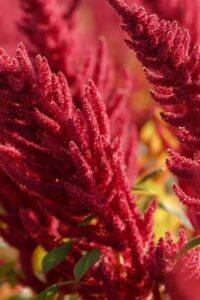
- Dt.inderjit.walia@gmail.com
- +91 89308-32001
Menu
Proso millet (Panicum miliaceum), a notable minor millet in the Gramineae family, is an annual monocotyledonous grass. Archaeological evidence indicates that it was first domesticated in northern China around 10,000 years ago. Recently, the grain has garnered attention from commercial and scientific communities due to its high mineral and amino acid content, low glycemic index, and gluten-free properties. Today, proso millet is widely grown across America, Europe, and Asia and remains a significant global food crop. Its short growth cycle and low water requirements make it an ideal rotation crop for winter wheat, helping to preserve soil moisture, manage winter weeds, and reduce the incidence of insects and diseases. Additionally, proso millet serves as a valuable intercropping option to mitigate economic losses when other crops fail to harvest or planting is delayed due to adverse weather. This fast-growing millet is commonly cultivated in India, thriving in hot tropical summers and at high altitudes, particularly in regions with short growing seasons and low soil fertility. Common millet, a grain crop, requires the least amount of water and may thrive in any soil except coarse sand. This plant thrives on high-elevation plateaus and is grown in the Himalayan region up to 2700 meters. The crop’s fast maturity allows it to withstand drought. The husked grain, which accounts for around 70% of the total grain, is healthy and can be consumed whole, boiled, or cooked as rice. It is sometimes ground into roti and consumed. Seeds are also parched and eaten. Panicum miliaceum contains 9% water, 75% carbohydrates, 11% protein, and 4% fat. Panicum miliaceum contains 382 calories per 100 grams (3.5 oz) and is a high source (20% or more of the Daily Value, DV) of numerous B vitamins and dietary minerals. Demand for more diverse and healthier cereal-based diets is rising, particularly in developed countries. The protein content in proso millet grains is comparable to that of wheat, but the ratio of specific essential amino acids (leucine, isoleucine, and methionine) is significantly higher in proso millet.
Kingdom: Plantae
Order: Poales
Family: Poaceae
Genus: Panicum
Species: miliaceum

It contains antioxidants that play a crucial role in detoxifying the liver. Compounds like curcumin, quercetin, ellagic acid, and catechins found in proso millet help neutralize free radicals and enhance the liver’s ability to eliminate toxins. This dual action of providing both protective proteins and antioxidant compounds makes proso millet a valuable dietary addition for supporting liver function and preventing injury.
